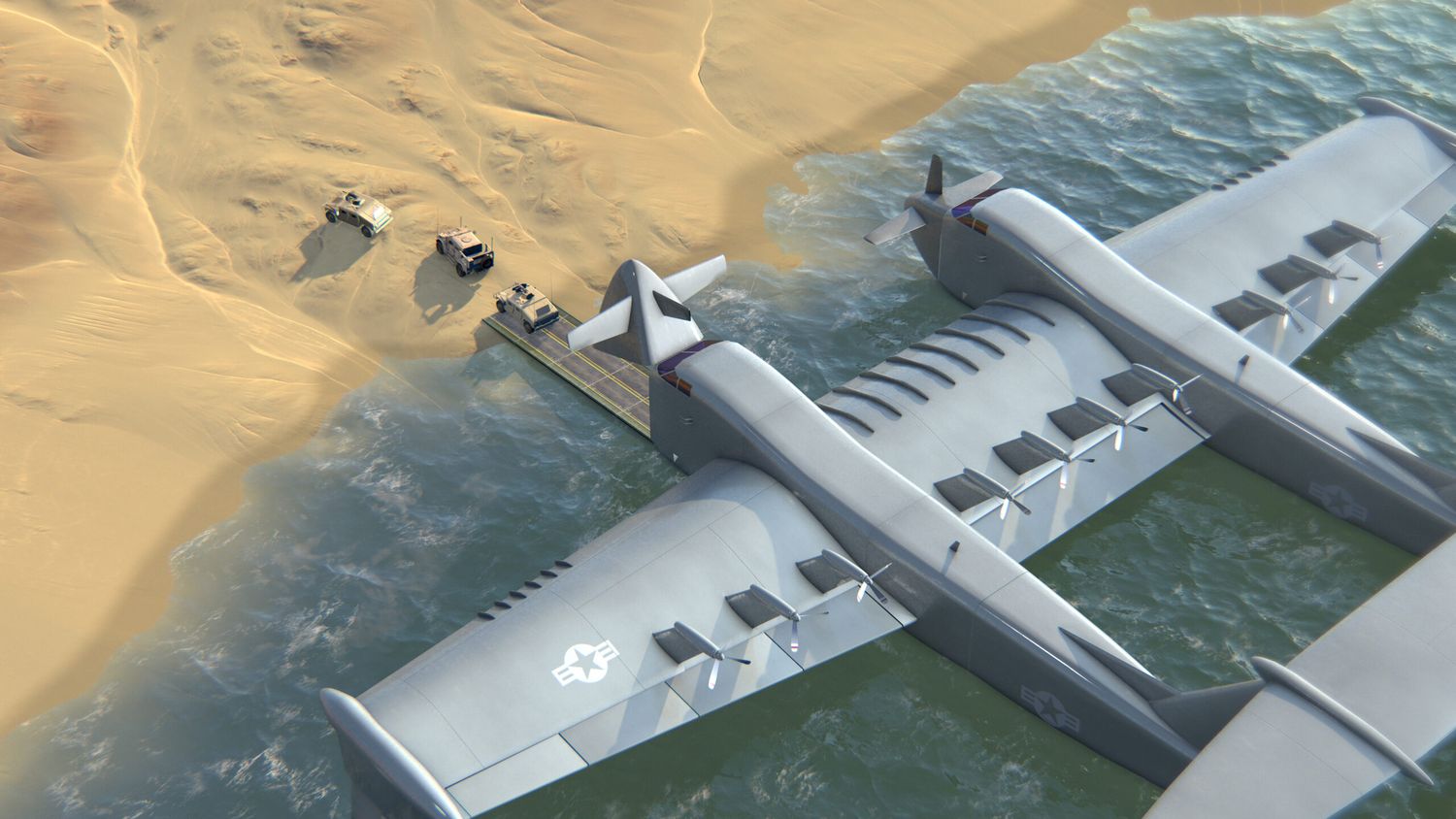DARPA’s Liberty Lifter program for heavy-lift seaplane moves forward
The Liberty Lifter program aims to design, build, float and fly a large seaplane that will enable the efficient transport of large cargo at speeds far in excess of existing maritime platforms.
The U.S. Defense Advanced Research Projects Agency, better known by its acronym DARPA, is working on a project to develop an affordable, innovative and disruptive air vehicle that operates efficiently in ground effect (< 100 feet above the surface), that can maintain flight altitudes up to 10,000 feet above mean sea level (MSL), and can meet Department of Defense requirements for heavy lift (over 100 tons), operating independently of runways and ports.
To that end, DARPA selected two teams – General Atomics, in collaboration with Maritime Applied Physics Corporation, and Aurora Flight Sciences, in collaboration with Gibbs & Cox and ReconCraft – to develop Phase 1 designs for the full-scale demonstrator of surface effect seaplanes that meet program requirements.
GA-ASI continues its mission to revolutionize aerospace.
Today, we’re proud to announce that we’ve been selected by @DARPA to help develop the future of seaborne tactical lift as part of phase 1 of the Liberty Lifter program.
Read now: https://t.co/WJjM1HhWTL pic.twitter.com/BSEHniZ4FT
— GA-ASI (@GenAtomics_ASI) February 1, 2023
The planned Liberty Lifter demonstrator will be a large seaplane of similar size and capability to the C-17 Globemaster III transport aircraft. Its objectives include takeoff and landing in sea state 4, sustained operation in water up to sea state 5, and extended flight near water in ground effect, but with the capability to fly out of ground effect, at altitudes up to 10,000 feet above sea level.
Our next revolutionary X-plane design challenge starts now! Aurora has been selected for phase 1 of the @DARPA Liberty Lifter program. Work on our conceptual design of a wing-in-ground-effect seaplane is underway.https://t.co/MoRdIryH5r pic.twitter.com/VwB54IdyO8
— Aurora Flight Sciences (@AuroraFlightSci) February 1, 2023
“We are excited to kick off this program and looking forward to working closely with both performer teams as they mature their point-of-departure design concepts through Phase 1,” said DARPA Liberty Lifter Program Manager Christopher Kent. “The two teams have taken distinctly different design approaches that will enable us to explore a relatively large design space during Phase 1.”
Different designs, same goals
The General Atomics team has selected a twin-hull, mid-wing design to optimize on-water stability and seakeeping. It employs distributed propulsion using twelve turboshaft engines.
Aurora Flight Sciences point-of-departure design more closely resembles a traditional flying boat, with a single hull, high wing and eight turboprops for primary propulsion.
Work in stages
During Phase 1, DARPA will work with both performer teams and Department of Defense stakeholders to refine the Liberty Lifter designs with particular attention to operational needs and operating concepts. The Phase 1 contract awards are for an 18-month period of performance with six months of conceptual design work and nine months of design maturation culminating in a preliminary design review. There will be an additional three months for manufacturing planning and test/demonstration planning reviews.
As scheduled, Phase 1 will transition into Phase 2 in mid-2024 with continued detailed design, manufacturing, and demonstration of a full-scale Liberty Lifter X-Plane. DARPA anticipates teaming with one or more DoD Service and international partners for those activities and further development of the Liberty Lifter concept into an operational vehicle.


Comentarios
Para comentar, debés estar registrado
Por favor, iniciá sesión